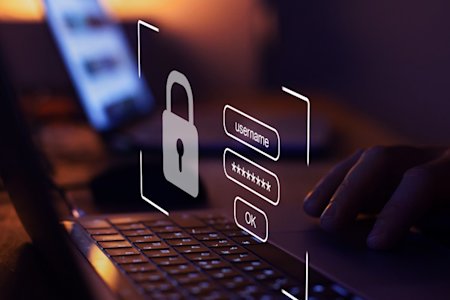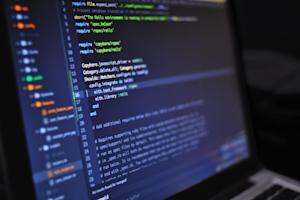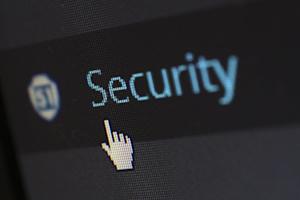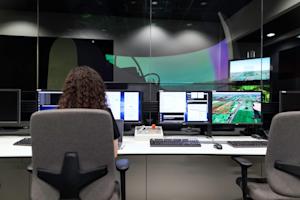While people ended up working from home out of necessity over the last two years, many found it to be more productive and enjoyable. As a result, about 60 percent of workers say they’d be more likely to apply for a job that has the option to work remotely.
If your company is considering letting employees continue remote work, you need to know how to secure remote access to your company’s computing resources and data for them. The switch to remote work opens up special security challenges you might not have faced before.
If you rushed into allowing remote work, you may have neglected some best practices.
Let’s take a look at what you should review to ensure your company’s data and systems as secure as possible.
The Significance of Remote Access in Today's Workplace
Remote access has become essential in modern work environments, offering several key benefits:
Flexibility and productivity: Remote access allows employees to work from anywhere, boosting flexibility and often leading to higher productivity and job satisfaction.
Business continuity: It ensures that operations continue smoothly during disruptions, such as emergencies or natural disasters, by allowing employees to access company systems remotely.
Global talent pool: Companies can hire from a broader talent pool without geographic limitations, bringing diverse skills and perspectives to the team.
Enhanced collaboration: Integrated collaboration tools in remote access solutions facilitate effective communication and teamwork, regardless of physical location.
Cost efficiency: Remote access can reduce costs associated with office space, utilities, and commuting, making it a cost-effective solution for businesses.
Embracing remote access helps organizations stay competitive and maintain efficient operations in a flexible work environment.
Upgrade to a Secure Remote Access Solution: Moving Beyond VPNs
Many companies still drift toward using older tech like a VPN for remote access. However, a VPN isn’t as secure as a remote access platform. VPNs connect remote devices to the company network, potentially exposing it to cyber threats.
VPNs are also difficult to get set up, scale, and maintain. Many VPNs do not automatically install security updates and patches, leaving organizations vulnerable.
A better option is a platform that allows for zero-trust network access. A remote access platform like Splashtop enables secure remote desktop access to managed devices. Remote access gives users access to work machines without the vulnerabilities associated with VPN.
4 Key Steps to Secure Your Remote Workforce
1. Ensure your Remote Access Solution has the Security Features you Need
Secure connections between your systems and remote devices serve two purposes. First, you can control who accesses what company devices. Secondly, you ensure the data that goes back and forth can’t be picked up by outside parties.
But to do that, the remote access solution you deploy needs to provide a solid suite of security features. These should give you control over securing data without creating barriers for your employees.
Start by looking for features that protect user accounts from being breached and unauthorized users from accessing your computers. These include two-factor authentication (2FA) to ensure a device or user is who they say they are, along with device authentication, and multi-level password security.
Other security features to look out for include:
Industry standard TLS 1.2 with AES 256-bit encryption for remote connections
Remote connection notifications
Screen auto-lock and session idle timeout
Copy/paste control
File transfer control
Remote print control
Lock streamer configuration
Proxy Server authentication
Digitally signed applications
Session, file transfer, and history logs
A secure remote access solution, where only the users and devices you give permission can access managed machines, is an important element of a zero-trust, secure network environment.
2. Set Proper Permissions
Your remote access solution needs to allow you to set user access permissions properly to ensure the utmost security. You want employees to only access the computers they need to do their job.
Many times remote workers end up with more access rights than they need, which provides more attack opportunities for hackers. Narrowly establishing access rights reduces the avenues hackers can take.
With a secure remote access solution, like Splashtop, access permissions can be set at both the individual and group level. This makes it much easier for IT admins to manage permissions at scale.
3. Monitor, Maintain, and Update
Even the most protected system becomes vulnerable over time if you don’t keep a close eye on it. Your remote access solution should make it easy for you to monitor access and alert you when a remote connection is established.It should also keep you updated on computer status and software installations.
Software notifications help you keep users on the most recent version of their programs. Out-of-date software is a prime target for hackers, after all. You also want a system that helps you track your inventory and provides easy-to-understand logs on sessions, file transfers, and changes.
Lastly, your remote desktop solution itself should make all security updates and patches free and easy to download.This ensures you and your employees are always using the most up-to-date, secure version of the remote access application.
4. Set Expectations and Educate
The biggest security resource—and hazard—is your employees. Setting proper expectations through company policy and educating them on their role in cyber risk goes a long way to creating a secure data environment.
Your remote work policy should include information and rules about what data can be downloaded and what needs to stay in the office. Employees should know how to deal with sensitive information like health records and trade secrets. They also need the procedures required to meet compliance standards.
The rules should also cover personal devices, including how and when they can be used for company business. Also include steps for employees to follow to report any suspicious activity or suspected attacks.
Educating remote workers should include reminders about following the same procedures at home that they do in the office. This includes knowing where to store files and how to secure their computer.
While phishing attacks aren’t unique to remote work, it’s easy for people to get careless when they aren’t at the office. Around half of all security breaches happen through phishing or malware.
Your employees are your first line of defense against both of these when they know what to look for and how to react.
Try Splashtop for Free
Many companies plan on allowing employees to continue working from home. Having a secure policy and plan in place can help you deal with increased cybersecurity risks. Start by securing your equipment, then provide a way for employees to securely access the software and files they need to do their jobs.
Start a free trial today to see how easy it is to enable secure remote access with Splashtop.




